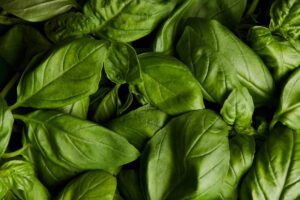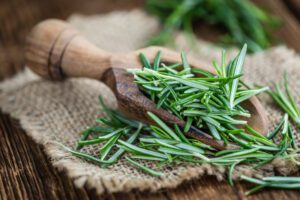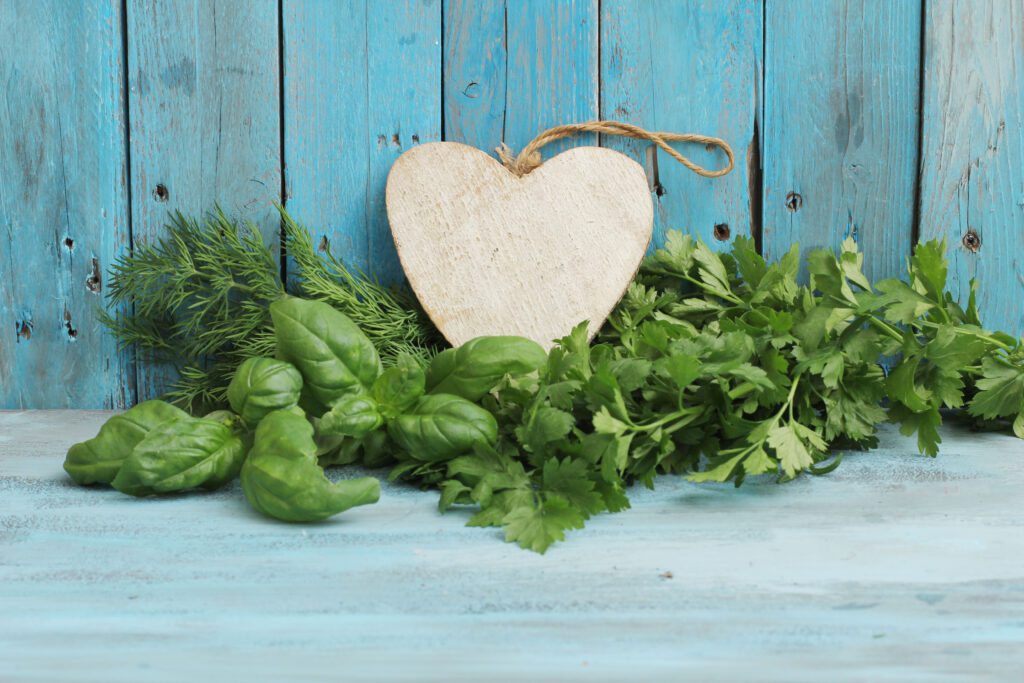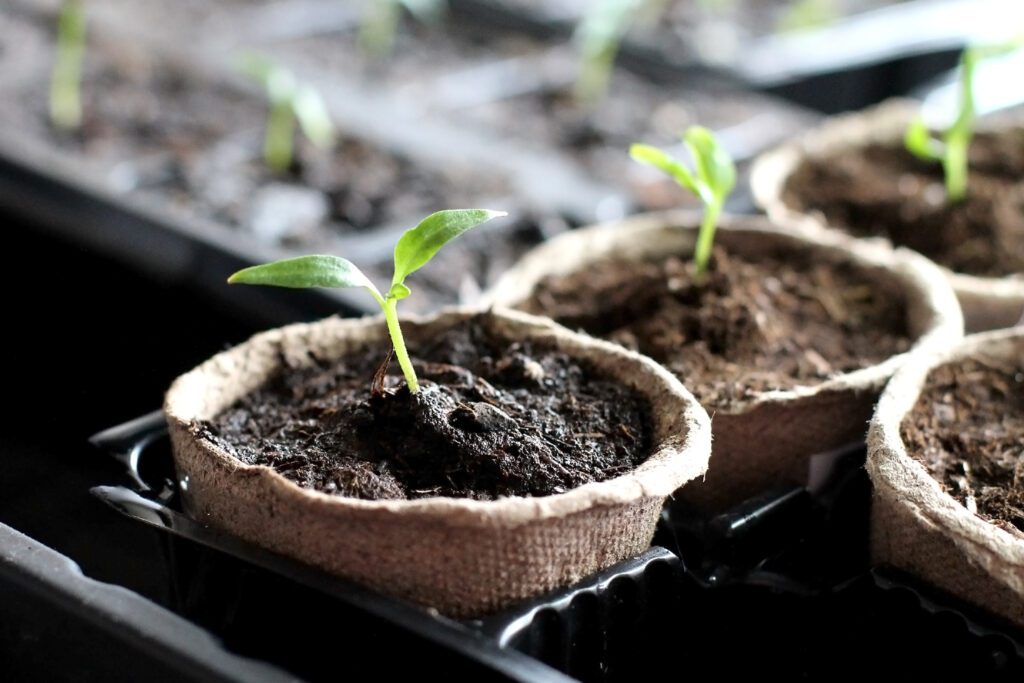Hey there, food lovers! Get ready to embark on a delicious journey into the heart of Italian cuisine, where the magic of Italian herbs transforms simple ingredients into mouthwatering dishes.
From the tantalizing aroma of fresh Basil to the robust flavor of oregano, herbs are the secret stars that make Italian seasoning a game-changer in the kitchen.
Imagine this: you’re sitting at a rustic wooden table in a quaint Italian villa, the air filled with the scent of homemade pasta sauce simmering on the stove. You take a bite, and boom! A symphony of flavors dances on your tongue.
The key to this culinary concert? A blend of dried herbs that hits all the right notes.
In this blog post, we’ll dive into the enchanting world of Italian seasoning. We’ll discuss why herbs are the unsung heroes of so many dishes and highlight the most commonly used herbs in Italian cooking.
But we won’t stop there! We’ll also share 5-star, easy-to-make Italian seasoning recipes that will bring out the Italian flavor in your dishes!
Imagine creating your own Italian seasoning, customized to your taste, right in your kitchen! No more store-bought dressings, no more settling for less. With its bold flavor, a homemade Italian seasoning blend will give you the satisfaction of saying, “I made it myself!”
We’ll even guide you on growing your herbs at home. Picture this: reaching over to your window sill, plucking herbs fresh from the soil, and tossing them into your pasta sauce or roasted vegetables. It doesn’t get fresher than that!
So, brace yourself because we’re about to spice up your life (and your spice rack)! Whether you’re a seasoned chef or a curious novice, this blog post will give you the key to unlock a treasure trove of Italian dishes. So, put on your apron, grab a small bowl, and get ready to mix up some magic.
Let’s dive in and learn how to use Italian seasoning to make every meal a celebration!

The A-Listers of the Italian Herb World
Let’s get to know the usual suspects that make up the flavorful world of Italian cuisine! These herbs have a standing reservation in your kitchen, ready to add their unique touch to any dish you’re whipping up.

Basil (Basilico)
Ah, Basil! Who can resist the fresh, sweet aroma of this green superstar?
Basil is a key player in many Italian dishes, from pasta sauce to pizzas, and it’s the star ingredient in pesto. Health-wise, this herb is a powerhouse, packed with Vitamin C and anti-inflammatory properties.
Fun fact: Did you know there are estimated to be up to 150 varieties of Basil? But sweet Basil remains the MVP in the Italian seasoning blend.

Sage (Salvia)
With its soft, peppery flavor, Sage is a bit of a dark horse in the Italian herb world. It shines in dishes like Saltimbocca and adds depth to roasted vegetables. Sage is also known for its potential health benefits, including boosting brain health and soothing sore throats. Plus, it pairs well with garlic powder, another staple in Italian seasoning.
Fun fact: Sage has a long history, with mentions dating back to ancient Greek and Roman civilizations.

Parsley (Prezzemolo)
Parsley is like that reliable friend who’s always there when you need it – in soups, salads, or as a garnish on so many dishes. This herb is not just a pretty face; it’s rich in antioxidants and Vitamin C.
Fun Fact: Many parsley legends presumably originated with a plant known as fool’s Parsley. This parsley doppelganger is actually deadly.

Oregano (Origano)
Oregano is the bold, outgoing one in the group, adding a punch of flavor to pizzas, pasta sauce, and grilled meats. It’s also packed with antioxidants and has antimicrobial properties.
Fun fact: The name oregano comes from the Greek words “oros” (mountain) and “ganos” (joy). So, it’s literally the joy of the mountains.

Thyme (Timo)
Thyme may be small, but don’t underestimate this herb! It brings a subtle, earthy flavor to dishes and works well in a homemade spice blend. Thyme is rich in Vitamin C and can help boost your immune system.
Fun fact: In ancient Egypt, Thyme was used for embalming. Thankfully, we just use it in our food now!

Bay Leaves (Alloro)
Bay leaves are the silent contributors to Italian food, infusing their mild, sweet flavor into soups and stews. They’re rich in vitamins and have anti-inflammatory properties.
Fun fact: Bay leaves aren’t just for cooking – they were once used to make crowns for Greek and Roman heroes!

Rosemary (Rosmarino)
Last but definitely not least, rosemary! This fragrant herb adds a pine-like flavor to roasted meats and bread. It’s also good for digestion and has anti-inflammatory benefits.
Fun fact: According to legend, the Greek goddess Aphrodite was cloaked in rosemary when she rose from the sea at the time of her birth. Now that’s a herb with a pedigree!
So there you have it, folks! These are the herbs that make Italian seasoning kick, each with its own unique character and charm. Remember, your homemade Italian seasoning mix is only as good as the herbs you use, so choose wisely and don’t be afraid to experiment.

Digging Deeper: Unearthing the Hidden Gems
We’ve met the A-listers of the Italian herb world. Now it’s time to pull back the curtain on some lesser-known but equally impressive stars. These herbs may be outside your everyday Italian seasoning recipe. Still, they’ve got charisma and flavor that can make your dishes sing. So, let’s dive into this flavorful world and see how you can mix things up with your homemade Italian seasoning recipe.

Saffron (Zafferano)
Saffron, the golden child of herbs in Italian spice blends, is known for its vibrant color and unique flavor. It’s a bit of a diva, bringing a luxurious touch to risottos and seafood dishes. Health-wise, saffron is a rockstar, packed with antioxidants and known to boost mood.
Fun fact: Saffron is the most expensive spice in the world, as it’s harvested by hand from the Crocus sativus flower. But don’t worry; a little goes a long way in Italian seasoning!

Fennel (Finocchio)
Fennel is the cool kid on the block, with a sweet, licorice-like flavor that adds a unique twist to dishes. It’s great in pasta sauces, salads, and even desserts. Fennel has several health benefits, including aiding digestion and reducing inflammation.
Fun fact: In ancient times, Fennel was thought to ward off evil spirits. Talk about a multi-purpose herb!

Marjoram (Maggiorana)
The unsung hero of herbs, Marjoram brings a sweet, floral flavor to the table. It’s a great addition to your homemade Italian seasoning, especially for chicken, lamb, and vegetable dishes. Marjoram is packed with antioxidants, and it’s known to help with digestion and heart health.
Fun fact: Marjoram is often confused with oregano, but its milder flavor sets it apart.

Anise (Anice)
Lastly, meet Anise, the wildcard. With its distinct, licorice-like flavor, Anise adds a bold touch to liqueurs and sweet treats in Italian cuisine. It’s also known for its potential health benefits, like boosting digestive health and reducing inflammation.
Fun fact: Anise seeds aren’t actually seeds; it’s a fruit! Who knew?
So there you have it – a peek into the world of lesser-known herbs used in Italian spice blends. These hidden gems can add a unique twist to your homemade Italian seasoning recipe, making your dishes stand out even more. So why not take a break from store-bought dressings and try creating your own herb blend? You might just find your new secret ingredient!
Remember, the beauty of cooking is in experimenting and discovering new flavors. So give these herbs a chance in your kitchen, and who knows? You might stumble upon your own 5-star Italian seasoning mix. Happy experimenting!
Green Thumb Magic: Crafting Your Own Italian Herb Garden in Michigan
So, you’ve been whipping up some chef’s kiss-worthy dishes at home. You’ve mastered the art of blending your Italian seasoning and are ready to level up. Well, my dear foodie friends, it’s time to roll up those sleeves and get a little dirt under your nails because we’re starting an herb garden!
Yep, that’s right. We’re about to turn your kitchen into a mini Italy, with the perfect herbs just a snip away. And don’t worry, even if Michigan weather can be a bit moody, these herbs are resilient little fellas. Plus, you always have the option to start an indoor herb garden!
- Basil: Ah, Basil. This diva loves the spotlight – I mean, sunlight. A good six hours of it every day. Start her indoors in late winter or early spring, then once the frosty Michigan weather has chilled out, move her outdoors. Basil takes about 60 to 90 days to mature. When it’s time to harvest, snip off the top leaves, but leave the lower ones alone. They’ve got more growing to do! Oh, and remember, Basil is an annual plant, so you’ll need to replant it each year.
- Sage: Sage is a hardy herb that can handle chilly weather (don’t to 30°F). It’s also a great companion plant for your other herbs, helping to keep pests away. You can start sage from seeds indoors, and it’ll take about 90 days to mature, but note that sage needs 6-8 hours of sunlight a day. Once you’ve got your sage plant going, trim it regularly to promote new growth. And just like Basil, sage is an annual plant.
- Parsley: Parsley is a cool kid – it doesn’t mind some shade and can survive cold weather. You can start Parsley from seeds indoors or outdoors, and it takes about 70 to 90 days to mature. Once your parsley plant is established, harvest the outer leaves as needed. Just be sure not to take more than one-third of the plant each time.
- Oregano: Next up is oregano. This laid-back cousin doesn’t mind a bit of shade. It’s a perennial plant, which means, unlike your gym membership, it’ll actually come back year after year. In Michigan, you can start planting oregano in early spring. Give it around 80 to 90 days to mature, then harvest it by cutting the stems just above the base.
- Thyme: Thyme is the chill sibling in the family. It loves the sun but can handle a bit of shade. Like oregano, it’s a perennial plant that will return yearly. Start planting Thyme in early spring; it’ll take about 85 days to mature. When it’s time to harvest, just snip off the top leaves.
- Bay Leaves: Bay leaves tend to be a bit of a diva – they need direct sunlight and warm temperatures to thrive. You can start growing Bay Laurel from seeds, or buying an established plant is best. It takes about two years for the plant to mature enough for harvesting, but trust me, the wait is worth it. Just make sure to fertilize your Bay Laurel plant regularly. Bay leaves are great as dried herbs, and keeping this plant in a pot can make a gorgeous addition to your decorative houseplants!
- Rosemary (Rosmarino): Rosemary is the evergreen herb, always ready to party. It loves the sun and well-drained soil. It’s a perennial plant, but it’s not a big fan of Michigan winters. So, your best bet is to grow it in a pot indoors. Or, if you’re feeling adventurous, move it outside during the summer and bring it back in when the temperature drops.
- Saffron (Zafferano): Ah, saffron – the most precious spice in the world. It’s derived from the saffron crocus flower and requires a bit more care than your average herb. Saffron flowers bloom in fall, so you’ll need to plant them in late summer. Once they bloom, harvest the stigmas (the red threads) and dry them. It takes around 150 flowers to produce one gram of saffron, so this spice is definitely a labor of love!
- Fennel (Finocchio): Fennel is a bit of a show-off – it has beautiful feathery leaves and pretty yellow flowers. Fennel can handle both sun and shade, making it perfect for Michigan’s ever-changing weather, as long as you keep it in a pot. Being a fragile perennial, Fennel is susceptible to cold and may survive the winter in mild climates. Fennel is usually grown annually in Michigan gardens and started indoors.
- Marjoram (Maggiorana): This herb is often confused with oregano, but its milder flavor sets it apart. You can start growing Marjoram from seeds indoors or outdoors and give it 65 to 75 days to mature. Once it’s ready, trim the top leaves for use, but leave some lower ones to keep growing.
- Anise (Anice): Last but not least, we have Anise. As mentioned earlier, it’s technically a fruit and can be grown from seeds or transplanted as a seedling. Anise loves the sun and takes about 120 days to mature. Once it’s ready, you can harvest the seeds by clipping and drying the flowers’ heads.
So there you have it! Your very own herb garden, full of herbs straight from Italy. Not only will this give you fresh green herbs all year round, but it’s also a great way to impress your friends. “This pasta sauce? Oh, I just whipped it up with some basil from my garden.” Sounds pretty cool, right?

The Italian Job: Sneaking Your Fresh Herbs into Your Home Cooking
Picture this: You’re in your kitchen, wearing your favorite apron (you know, the one with the questionable stain on it), and you’ve got a bunch of herbs on your counter. You’ve got Basil, Oregano, Thyme, Rosemary, and maybe even some Marjoram if you’re feeling fancy. Now, what to do with all these herbs?
Well, my friend, you’re about to embark on a culinary adventure that will take your home cooking from “eh, it’s edible” to “holy cannoli, this is SO good!” So buckle up because we’re diving into Italian seasoning!
The Italian Classics
Let’s start with the basics. Italian flavors are like the Avengers of the culinary world – they’re fantastic on their own, but when they team up with a little salt and red pepper, they create something truly extraordinary. A blend of dried herbs can elevate your pasta sauces, roasted vegetables, and even your homemade pizza.
But wait, there’s more! Have you ever tried making your own Italian seasoning? It’s easy peasy lemon squeezy. All you need is a small bowl, your favorite herbs, and a few minutes of your time. Mix them with some red pepper flakes, store them in an airtight container, and voila! You’ve got your very own homemade Italian seasoning mix ready to jazz up your dishes.
“But I don’t cook Italian meals every day,” I hear you say. No worries! These versatile herbs can sneak their way into just about any dish. Making a stir-fry? Add a sprinkle of Italian seasoning. Whipping up a soup? Toss in some rosemary. Grilling some chicken? Rub it with a mix of Thyme, garlic powder, and onion powder. Trust me, these herbs are the culinary equivalent of a Swiss Army knife.
Try This at Home
Ready to put these tips into action? Here are a few dishes you can try at home:
- Spaghetti Aglio e Olio: This classic Italian dish is as simple as it gets. All you need is spaghetti, garlic, red pepper flakes, and a generous sprinkle of your homemade Italian seasoning blend.
- Rosemary Lemon Chicken: This easy-peasy recipe requires just a few ingredients – chicken, lemon, rosemary, and salt and pepper. It’s a great way to add a touch of the flavors of Italy to your weekday dinners.
- Herb Roasted Veggies: Toss your favorite veggies with some olive oil, Italian seasoning, salt, and pepper, then roast in the oven until they’re golden and delicious. It’s a healthy and flavorful side dish that goes well with almost anything.

5 Homemade Spice Blends You Can Make in 5 Minutes
These easy-to-make Italian seasoning mixes are just the tip of the iceberg for homemade spice blends. You can create custom blends with a few essential herbs and spices to take your dishes to the next level. Adding an Italian spice blend to your next meal will surely get you 5-stars from your family!
Classic Italian Seasoning
- 2 tablespoons dried Basil
- 2 tablespoons dried oregano
- 2 tablespoons dried Thyme
- 2 tablespoons dried Marjoram
- 1 tablespoon dried rosemary
- 1 tablespoon dried sage
Zesty Italian Seasoning Mix
- 2 tablespoons dried oregano
- 1 tablespoon dried marjoram
- 1 tablespoon dried thyme
- 1 tablespoon dried basil
- 1 tablespoon dried rosemary
- 1 teaspoon dried red pepper flakes
Garlic Italian Seasoning Mix
- 2 tablespoons dried oregano
- 2 tablespoons dried Basil
- 1 tablespoon dried thyme
- 1 tablespoon dried rosemary
- 1 tablespoon garlic powder
Lemon-Pepper Italian Seasoning Mix
- 2 tablespoons dried oregano
- 2 tablespoons dried Basil
- 1 tablespoon dried thyme
- 1 tablespoon dried rosemary
- 1 tablespoon dried lemon peel
- 1 teaspoon black pepper
Savory Italian Seasoning Mix
- 2 tablespoons dried Basil
- 2 tablespoons dried oregano
- 1 tablespoon dried rosemary
- 1 tablespoon dried thyme
- 1 tablespoon dried savory
- 1 tablespoon dried marjoram
- 1 teaspoon garlic powder
Mix the ingredients for the Italian seasoning of your dreams. Store in an airtight container and use it to add flavor to any dish, whether it’s Italian or not.

The Indoor Jungle: A Step-By-Step Guide to Starting Your Own Herb Garden
Alright, folks! Put on your best David Attenborough voice because we’re about to dive into the wild world of indoor gardening. No need for sun hats or bug spray here – just you, a handful of seeds, and the great indoors. We’ll transform your kitchen windowsill (or any sunny spot) into a lush, green, herb-filled paradise. So let’s get our hands dirty (figuratively, at least until step 4)!
Step 1: Choose Your Green Gang
First things first, you’ve got to decide which herbs you want to grow. Basil? Mint? Rosemary? The Spice Girls of the plant world? It’s all up to you. Just remember, like choosing a Netflix series to binge-watch, pick herbs that suit your taste and lifestyle.
Step 2: Light ‘Em Up
Herbs are like sunbathers – they love to soak up the rays. So ensure your chosen spot gets at least six hours of sunlight daily. If your house is more ‘cozy cave’ than a ‘sun-drenched greenhouse,’ don’t panic. You can always use a grow light to keep your plants happy.
Step 3: Pot It
Choosing the right pot is like choosing the right pair of jeans – it’s got to be the right fit. Too tight, and your herbs won’t have room to grow. Too loose, and they’ll feel lost. Aim for a pot about 6 to 8 inches in diameter with good drainage. Remember, nobody likes wet feet, especially not herbs.
Step 4: Getting Dirty
Now, let’s talk soil. Most herbs aren’t too fussy, but they do appreciate a well-draining soil mix. You can find one at your local grocery store or make your own by mixing equal parts potting soil, peat moss, and perlite. It’s like making a cake without the fun part of licking the spoon.
Step 5: Plant Parenthood Begins
Time to plant! Place some soil in the pot, leaving room for your herb. If you’re using seeds, follow the instructions on the packet. If you’re using a seedling, dig a small hole, place the plant in, and gently cover the roots with soil. It’s like tucking your plant children into bed.
Step 6: Watering 101
Watering is like a Taylor Swift song – it’s all about timing. Water your herbs when the top inch of soil feels dry. But be careful not to overdo it. Remember, you want to hydrate your herbs, not drown them.
Step 7: Maintenance Mode
Now that your indoor herb garden is up and running, it’s all about maintenance. Make sure your herbs get enough light, water, and love. Prune them regularly to promote growth, and remember to brag about your green thumb skills to all your friends!
So there you have it! Your step-by-step guide to starting and maintaining an indoor herb garden. Remember, this is supposed to be fun, so don’t stress if things don’t go perfectly immediately. Just enjoy the process; before you know it, you’ll sprinkle herbs fresh from your home garden on your dishes like a pro chef. Happy gardening!

Wrapping It Up
Well, folks, we’ve been on quite the journey together. We’ve dug into the dirt, sprinkled seeds, and hopefully not killed any plants (yet). We’ve transformed your kitchen windowsill into an herb garden and turned you into a bona fide home chef. We even managed to sneak some herbs into non-Italian dishes (your secret’s safe with me).
So what’s next? Well, that’s up to you, my green-thumbed friends. Maybe you’ll start experimenting with different combinations of herbs in your cooking. Perhaps you’ll impress your friends at your next dinner party with your homemade Italian seasoning blend. Or maybe you’ll just enjoy the simple pleasure of snipping the freshest herbs from your indoor garden.
To help you on your journey, here are a few tips and tricks:
- Be patient: Herbs take time to grow. So if your Basil is looking a bit sad, don’t worry. Give it some time, love, and sunlight, and it’ll come around.
- Experiment with flavors: Don’t be afraid to mix and match your herbs. Basil and oregano are classic, but why not try Basil and Thyme, or Rosemary and Oregano?
- Use fresh and dried herbs: While fresh herbs offer a burst of flavor, don’t underestimate the power of dried herbs. They can add depth and complexity to your dishes.
So go ahead, get your hands dirty, and start growing your own herb garden. And remember, whether you’re a seasoned gardener or a complete newbie, the most important thing is to have fun with it. After all, every great chef knows that the secret ingredient is always love.
Here’s to bringing a taste of Italy right into your home.

